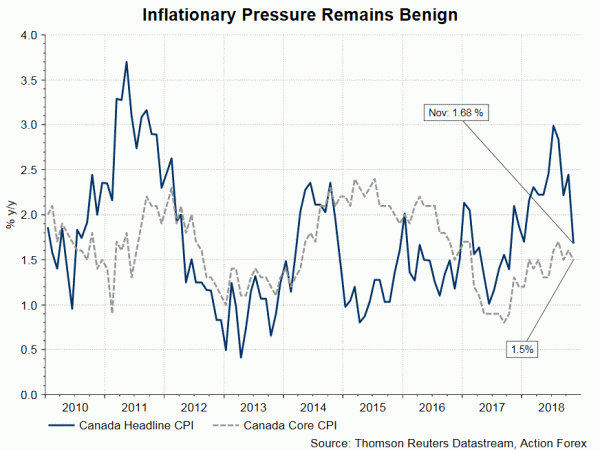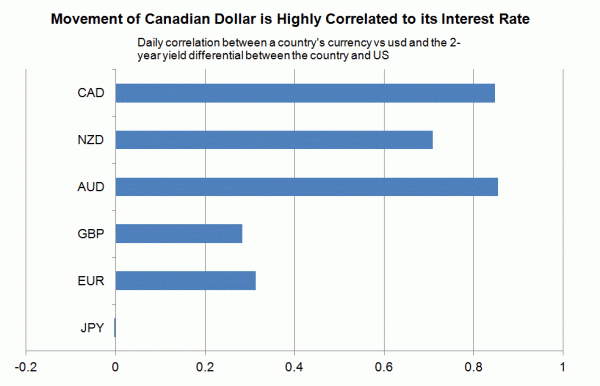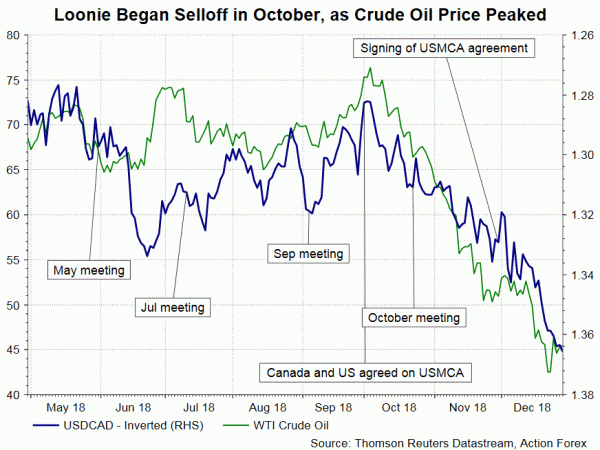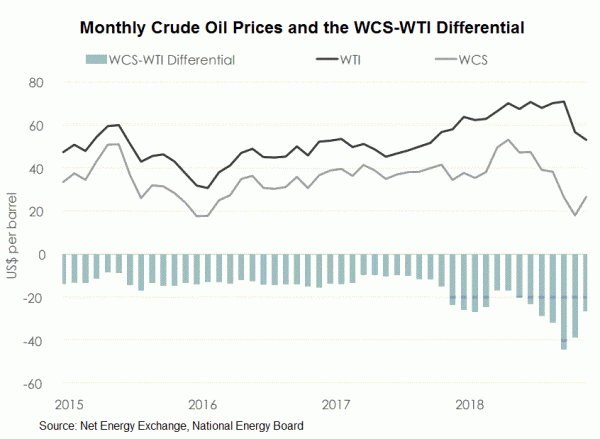Canadian dollar weakened against US dollar in 2018, first time in three years. Loonie declined over -7% against the greenback last year, with much of the selloff took place in the third quarter. Key factors driving CAD’s movement are BOC’s rate hike path, crude oil price, ratification of USMCA (or NAFTA 2.0) by the US Congress. Consensus forecast is that CAD would strengthen against USD in 2019 as BOC would continue to raise the policy (the market has priced in three rate hike in 2019, oil price would rebound as OPEC+ continue to cut output and the new trade deal with the US would drive business confidence. After the severe price slump in the fourth quarter of 2018, we don’t feel surprise to see a rebound in Canadian dollar in the first half of 2019. However, we are not as optimistic as the market. In particular, we expect downside surprise to BOC’s rate hike and big hurdle to US ratification of the USMCA agreement. Meanwhile, the upcoming Canadian federal election in October could raise the volatility of loonie.
BOC Rate Hike
Amidst intensification of global economic slowdown, financial market turmoil and sell of oil prices, BOC kept the policy rate unchanged at 1.75% and turned dovish at its December meeting. At noted in the meeting statement, the central bank envisaged that, in the global economy, “signs are emerging that trade conflicts are weighing more heavily on global demand”. It added, however, that “there are upside as well as downside risks around trade policy”. Concerning Canada, BOC acknowledged that production cut in Alberta would affect GDP. Yet, the duration and size of the impact would depend on global and domestic oil prices. While forecasting less momentum in 4Q18, policymakers also revised lower GDP projections, leading to “additional room for non-inflationary growth”.
Despite turning more dovish, BOC retained the view that the policy rate would “need to rise into a neutral range to achieve the inflation target”. It added that “the persistence of the oil price shock, the evolution of business investment, and the Bank’s assessment of the economy’s capacity will also factor importantly into our decisions about the future stance of monetary policy”.
The market currently expects three rate hikes in 2019 with the first two rate hikes coming in first and second quarters. Such bets for three rate hikes have reduced to 56% from 60% in late-October. Risks on the number of rate hikes are skewed to the downside. Indeed, Fed’s slowdown in the pace of monetary policy tightening might reduce the urgency for BOC to increase its policy rate. The Conference Board of Canada expects the country’s GDP to expand +1.9% in 2019, easing from +2.1% this year. Domestic inflationary pressure has diminished markedly in 2H18. Headline CPI plunged to +1.7%, lowest since October 2017, amidst energy price slump. Core CPI was at +1.5% in November, a benign level that does not call for a rate hike. The momentum for future price increase is not strong, at all. Year-over-year average hourly wage growth continued its decline +1.46%, its lowest reading since July 2017, in November. This was in spite of the fact that the unemployment rate fell further to 5.6%.
BOC’s rate hike schedule is closely related to loonie’s movement. Indeed, the (positive) correlation between interest rates and Canadian dollar has been the highest among major currencies.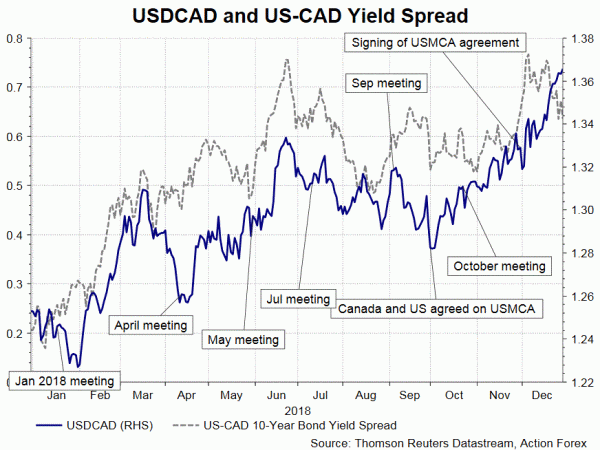
Oil Price
Canada’s energy sector is critical to its economy. Being the 6th largest energy producer, the 5th largest net exporter and the 8th largest consumer, the country’s energy sector accounts for almost 11% of the nominal GDP in 2017. Government revenues from energy were CAD 10.3B in 2016. Therefore, concerns on oversupply in oil and the recent slump in oil prices have led the selloff in the loonie. Meanwhile, excessive inventory also widened the spread of Canadian oil and WTI prices. The good news is that a rebound in oil price could materialize in the beginning of next year, following the massive selloff in 2018 and driven by the output cut by OPEC+. Domestic oil price has also narrowed its discount to WTI due to Alberta provincial government’s announcement of output cut. These should help support the loonie.
In early December, the majority of OPEC members and several non-OPEC producers agreed to reduce the overall production by 1.2M bpd (from October’s output), effective as of January 2019 for an initial period of 6 months. Alberta’s output cut plan would also lend support to Canada’s oil price narrowing its gap with international benchmarks. Effective January 1, 2019, producers in the province of Alberta with more than 10K bpd are required to lower production by about 8.7%, making up the total cut of 325K bpd. After three months, when there is enough shipping space on pipelines to improve prices, the reduction will be lowered to 95K bpd through the rest of year.
The chart below shows that the Western Canadian Select (WCS) oil price has historically sold at a discount to WTI, reflecting the lower quality of WCS and the cost to transport the crude oil to US refineries. Between 2015 and 2017, this differential averaged a discount of US$12.95/ bbl. However, the discount widened significantly to an average of US$27.09 in 2018, with a discount of US$50 on some trading days in October 2018.
Trilateral Trade Deal – USMCA
Announcement of Canada’s joining of the bilateral deal between Mexico and US (now becomes the trilateral USMCA) on September 30, and the signing of the USMCA agreement on November triggered short-lived rallies in the loonie. The boosts were temporary as the market remained cautious, mainly on whether it would be ratified by the US Congress. The tax reform and the repeal of Obamacare have illustrated the hurdles in getting a bill passed by the legislature – albeit dominated by Republicans. The challenge would even be bigger as the Congress is divided after the midterm elections. Indeed, House Democratic Leader Nancy Pelosi has noted that the deal might not win congressional approval without changes to bolster its labor and environmental protections. An eventual ratification should, however, boost the loonie, as this could resume momentum on exports and investment.




